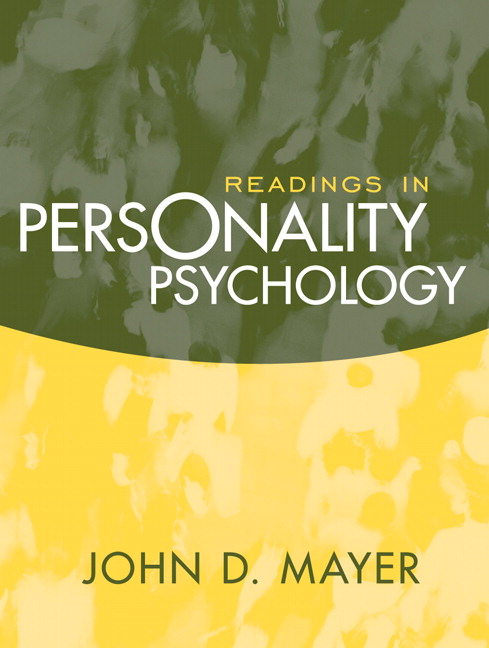A Wide Variety of Primary Source Materials
Readings in Personality Psychology exposes students to 16 chapters of key readings in the field of personality psychology. The readings represent a diversity of sources in the field. Included among them are contemporary theoretical articles, contemporary empirical studies, historical theoretical articles, reviews of important books and tests, opinion pieces from Dialogue (the newsletter of the Society of Personality and Social Psychology) and humorous writings. Most readings involve just one selection, but a few readings are made up of one or two short selections.
Multiple Supports for the Student Reader
At the time they take their first course in personality psychology, most undergraduates will be unfamiliar with the primary source materials of the discipline, and lack experience in reading it. Readings in Personality Psychology provides those students with both global and reading-specific support for their studies.
The book’s original first chapter provides global support for beginning readers of personality psychology by explaining to students why it is useful to read the psychological literature. The chapter explains what primary sources are and provides general pointers about how to read the literature and the challenges involved in doing so.
Further global support is provided in the opening essay of each subsequent chapter, which often speaks to general issues of reading psychology as well as to the specific material being introduced.
Support for the specific readings is provided on a chapter-by-chapter basis. This supporting material, included in each chapter, consists of the following:
- An Introduction to the Type of Reading. Each chapter introduces students to the type of reading that is to be encountered. From this, students are prepared ahead of time for whether the reading is historical or contemporary, theoretical or empirical, and whether it appeared in a journal, book, or other medium. The chapter introductions serve to educate students as to what the available sources in the field are like.
- The Significance of the Reading. The next section of each readings chapter examines the reasons the specific selection was chosen for the book, and why it is of importance for psychology students to read. In the case of historical articles, for example, the context of the article will be discussed, sometimes with a brief discussion of the field’s response to a given article, with documenting scholarship.
- The Watch List. The watch list provides students with specific, section-by-section preparation for reading the article. The list explains special technical vocabulary the student might encounter, provides background on any psychological tests mentioned in the article, discusses any historical context useful to understanding what is going on, and comments on statistical techniques where useful.
- Concluding Comments. At the end of the selection, a brief comment is provided to help students reflect on the material they have just encountered.
- Study Questions. Finally, each article concludes with a review section that contains a half dozen or so review questions that students can use to further integrate and synthesize what they have read.

